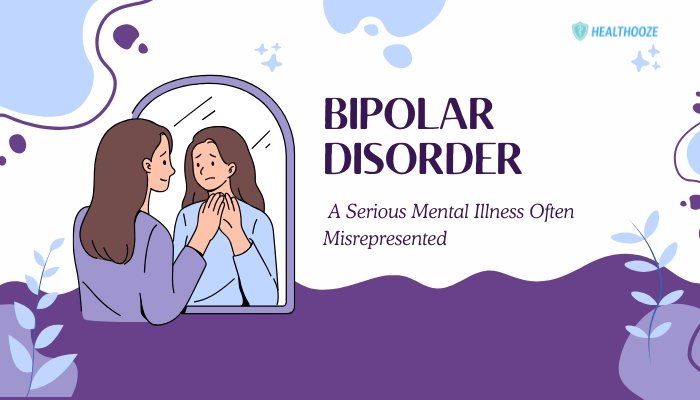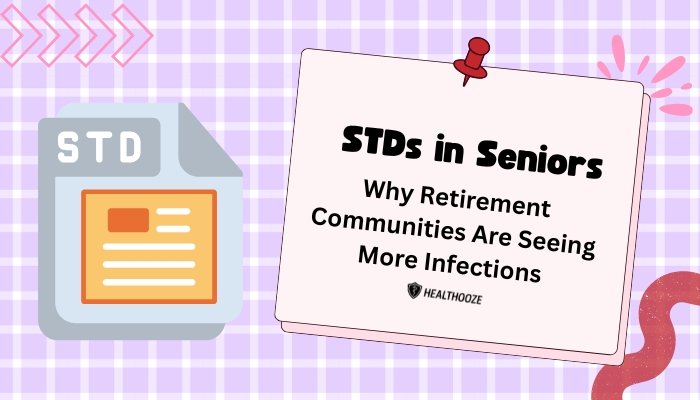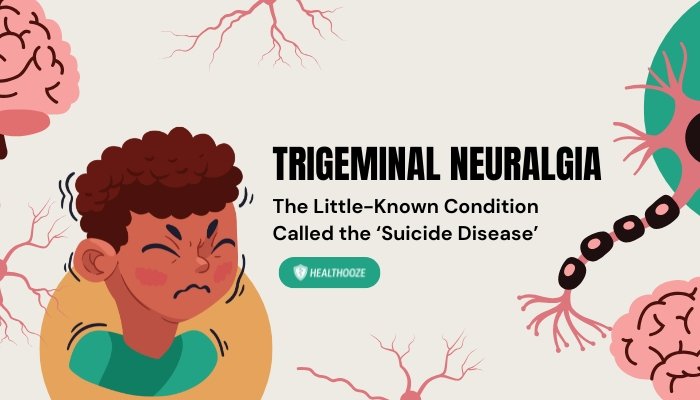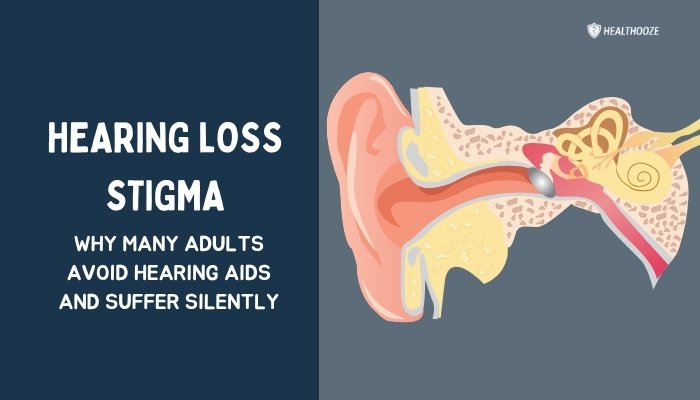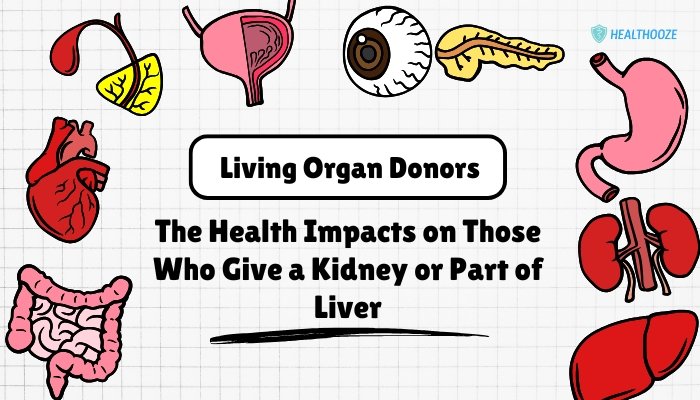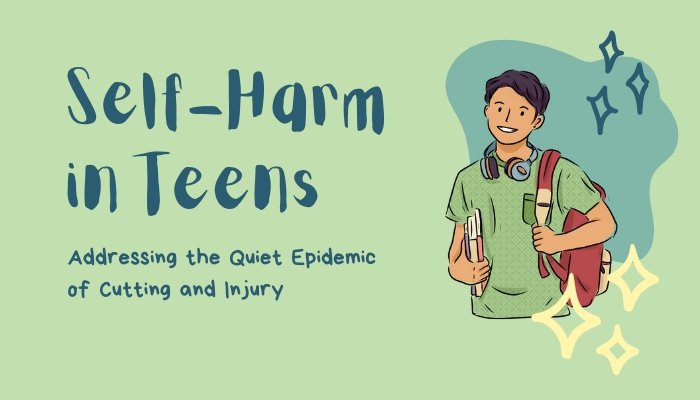Introduction
Bipolar disorder is a complex mental illness involving shifts in mood, energy, and activity levels. Although it affects millions of people worldwide, it remains widely misunderstood. Many believe that bipolar disorder merely equals “mood swings” or that individuals can quickly snap out of its highs and lows.
However, it is far more serious, characterized by intense episodes of mania (or hypomania) and depression that can disrupt relationships, performance at work or school, and overall stability. When bipolar disorder is left unrecognized or inadequately treated, it can lead to severe consequences such as financial crises, broken relationships, or even suicide attempts.
Moreover, media portrayals often simplify or sensationalize the condition, perpetuating the myth that people with bipolar disorder are merely “hot-tempered” or “unpredictable.”
The real experience is typically more nuanced. With appropriate treatment—incorporating medication, psychotherapy, and ongoing support—most individuals learn effective ways to manage symptoms, maintain fulfilling relationships, and pursue goals.
This article unravels the layers of bipolar disorder, exploring its different subtypes, symptom profiles, potential causes, and evidence-based interventions. By highlighting the lived experiences behind the scientific facts, we can deepen empathy and reduce the stigma that many people face daily.
Understanding Bipolar Disorder
Defining Bipolar Disorder
Bipolar disorder belongs to a category of mood disorders, in which individuals cycle through distinct emotional states more intense than typical mood variations. These states usually fall into two poles:
- Mania or Hypomania: Elevated, expansive, or irritable mood with heightened energy levels.
- Depression: Low or depressed mood accompanied by diminished energy and decreased activity or motivation.
To be diagnosed, mood symptoms must exceed normal ups and downs, significantly affecting daily functioning or relationships. Episodes can last days to weeks, though the pattern differs from person to person.
Bipolar Subtypes
Different subtypes capture various intensities and patterns of mood fluctuation:
- Bipolar I Disorder
- Involves at least one full manic episode.
- Episodes of major depression usually occur as well, though not mandatory for the diagnosis.
- Mania in Bipolar I is often severe, possibly requiring hospitalization or including psychotic features.
- Bipolar II Disorder
- Characterized by at least one hypomanic episode and one major depressive episode.
- Hypomania is less intense than full mania, but still noticeably different from a typical mood.
- While mania in Bipolar I can be extreme, individuals with Bipolar II never experience full manic episodes.
- Cyclothymic Disorder (Cyclothymia)
- Chronic, milder mood fluctuations involving numerous periods of hypomanic-like and depressive-like symptoms.
- Symptoms persist for at least two years (one year in adolescents and children), though they may not meet full criteria for a hypomanic or major depressive episode.
- Other Specified / Unspecified Bipolar Disorders
- Encompass individuals who exhibit bipolar-like symptoms that don’t fit neatly into standard categories but still significantly impair functioning.
Key Symptoms of Manic, Hypomanic, and Depressive Episodes
- Manic Episode:
- Heightened or irritable mood.
- Increased activity or restlessness.
- Grandiosity or inflated self-esteem.
- Rapid speech, racing thoughts.
- Decreased need for sleep (feeling rested after just a few hours).
- Possible impulsive or reckless behaviors (e.g., overspending, risky driving, substance misuse).
- Severe mania can involve psychosis, such as delusions or hallucinations.
- Hypomanic Episode:
- Similar to mania but less extreme, typically without psychotic features.
- Observable change from typical behavior, noticeable by others, but not severe enough to cause major social/occupational disruption.
- Major Depressive Episode:
- Low, sad, or empty mood, often with a sense of hopelessness.
- Loss of interest in activities once enjoyed (anhedonia).
- Changes in appetite or weight, sleep disturbances (insomnia or hypersomnia).
- Fatigue or loss of energy.
- Feelings of worthlessness or excessive guilt.
- Difficulty concentrating or making decisions.
- Possible recurrent thoughts of death or suicide.
Although mania/hypomania and depression may appear contradictory, individuals typically rotate between these extremes (though variations exist). Some patients also experience mixed features, showing both mania-like energy and depressive bleakness simultaneously.
Myths and Stigmas Around Bipolar Disorder
Misinterpretations about bipolar disorder abound, often leading to negative stereotypes and discrimination against those who have it.
Myth 1: “It’s Just Mood Swings Everyone Has”
Reality: Normal mood variations exist, but bipolar episodes are more intense and prolonged. People with bipolar disorder cannot simply “snap out of it.” These episodes can severely disrupt daily functioning, relationships, or even lead to hospitalization.
Myth 2: “Bipolar = Being Unstable or Violent”
Reality: Media tropes sometimes depict those with bipolar disorder as erratic or dangerous. However, while impulsive behaviors can occur during mania, the disorder alone does not equate to aggression or risk to others. Many individuals manage episodes effectively and pose no threat.
Myth 3: “If You’re High-Functioning, You Can’t Be Bipolar”
Reality: Some individuals with bipolar disorder excel in careers, creative pursuits, or leadership roles. The presence of mania or depression episodes does not invalidate their capabilities outside those periods, especially with supportive environments or effective treatments.
Myth 4: “Medication Is the Only Way”
Reality: Medication often forms a cornerstone of treatment, yet psychosocial interventions (e.g., psychotherapy, peer support, lifestyle changes) can also be vital. Many adopt a combined approach, adjusting as needed for each phase or personal preferences.
Myth 5: “Children Can’t Have Bipolar Disorder”
Reality: Children and adolescents can exhibit early-onset bipolar disorder, albeit with a different clinical picture than adults. Clear guidelines exist to help mental health professionals differentiate typical moodiness from clinically significant episodes. Early identification is crucial for better outcomes.
Causes and Risk Factors
Genetic Predisposition
Bipolar disorder frequently runs in families. Having a parent or sibling with bipolar disorder elevates the risk, although it’s not guaranteed. Studies suggest multiple genes contribute, each conferring incremental risk rather than a single gene “causing” the disorder.
Brain Chemistry and Structure
Imbalances in neurotransmitters like dopamine, serotonin, and norepinephrine can disrupt mood regulation. Neuroimaging also indicates variations in frontal-limbic pathways for emotional control. Although no single brain marker diagnoses bipolar disorder, these insights guide medication targets and spark research into novel treatments.
Environmental Stressors
- Chronic Stress: Overwhelming life events, such as job loss, divorce, or trauma, can trigger or exacerbate an episode.
- Substance Use: Drugs or alcohol can precipitate mania or depression, complicating the disorder’s trajectory.
- Sleep Deprivation: Irregular sleep schedules can destabilize mood, possibly leading to mania or depression.
Hormonal and Biological Changes
Certain transitional periods—like postpartum adjustments or thyroid dysregulation—may intensify vulnerability to bipolar episodes. Healthcare professionals often screen for endocrine issues if new mood episodes emerge.
Impact on Daily Life
Strains on Relationships
- During Mania: Hyperverbal or reckless behaviors can alarm loved ones or break trust (e.g., excessive spending or boundary issues).
- During Depression: Affected individuals may withdraw, losing contact with friends or family. Relationship strain accumulates if cycles recur frequently.
Work and Academic Challenges
- Missed Days: Hospitalization or inability to concentrate can lead to inconsistent attendance.
- Productivity Fluctuations: Mania might yield creative bursts or unrealistic overcommitment, while depression can hamper tasks.
- Disclosure Dilemmas: Fear of stigma may prevent individuals from seeking workplace accommodations or academic support.
Financial Instability
Manic impulsivity may prompt poor financial decisions—unplanned travel, major purchases, or gambling. Combined with possible job disruptions, these behaviors can create ongoing money troubles that add stress, fueling further mood swings.
Health and Substance Use
- Self-Medication: Some misuse alcohol or drugs to cope with mood episodes, intensifying cycles.
- Medical Neglect: Irregular follow-ups for chronic conditions or ignoring physical ailments because of mania can undermine overall health.
Treatment and Management
Pharmacological Approaches
- Mood Stabilizers
- Lithium, one of the earliest recognized mood stabilizers, remains a cornerstone.
- Valproate, carbamazepine, and lamotrigine are alternatives or adjuncts.
- Atypical Antipsychotics
- Useful for controlling manic or mixed episodes, and sometimes for bipolar depression (e.g., quetiapine, olanzapine, risperidone).
- Antidepressants
- Can help with bipolar depression, but risk precipitating mania if not combined with a mood stabilizer.
- Benzodiazepines
- Sometimes used short-term for severe agitation or insomnia but not recommended as a primary treatment.
Proper medication regimens require adjustments over time, considering side effects (weight gain, sedation, metabolic changes) and personal response. Close collaboration with psychiatrists ensures timely modifications.
Psychotherapy and Psychoeducation
- Cognitive Behavioral Therapy (CBT)
- Identifies irrational thoughts fueling mania or depression, guiding coping tactics.
- Tools for recognizing early warning signs (e.g., decreased need for sleep) so individuals can mitigate full-blown episodes.
- Interpersonal and Social Rhythm Therapy (IPSRT)
- Emphasizes stable daily routines—consistent bedtime, meal times—to regulate circadian rhythms that can affect mood.
- Family-Focused Therapy
- Trains families to handle crises, improve communication, and lower stress. This can reduce relapses and shortens hospital stays.
- Psychoeducation
- Teaching patients (and families) about the nature of bipolar disorder fosters insight and acceptance, increasing medication compliance.
Lifestyle and Self-Care
- Regular Sleep Patterns: Avoiding night shifts or extensive travel across time zones. Minimizing late-night activities helps preserve mood stability.
- Balanced Nutrition: Monitoring caffeine and sugar intake that might disrupt energy or exacerbate mania.
- Exercise: Moderate aerobic or mindfulness-based exercises help reduce stress and stabilize mood.
- Stress Management: Relaxation techniques, journaling, or mindfulness sessions to cope with daily pressures.
- Support Networks: Peer groups or online forums deliver shared understanding, problem-solving tips, and a sense of belonging.
Crisis and Relapse Prevention
- Early Warning Sign Monitoring: Recognizing subtle cues like sudden euphoria, decreased need for sleep, or irritability can avert major episodes if intervention occurs early.
- Safety Plans: Prearranging contact persons or safe spaces if suicidal thoughts or mania escalate.
- Consistent Follow-Up: Regular check-ins with mental health providers maintain medication compliance and detect changes promptly.
Social and Cultural Perspectives
Stigma in Different Regions
Societal beliefs vary widely. In some areas, bipolar disorder may be misinterpreted as a personal failing or moral weakness, discouraging individuals from disclosing symptoms. Alternatively, certain communities might label mania as “divine inspiration” or “demonic possession,” preventing appropriate medical intervention.
Gender and Bipolar Disorder
- Diagnostic Discrepancies: Women might receive a borderline personality disorder label when mania or hypomania is overlooked, or men might be misdiagnosed if aggression is presumed to be mania.
- Hormonal Factors: Fluctuations in estrogen or progesterone can impact episode severity in women, influencing medication choices.
Age and Life Cycle Events
- Teens and Young Adults: Early onset can overshadow typical teenage mood changes or attention deficits, complicating timely recognition.
- Older Adults: Diagnoses after 50 can raise concerns about comorbidities like neurocognitive decline or medical conditions that mimic mood swings.
Combating Misinformation and Stigma
Empowering Individuals with Bipolar Disorder
- Self-Advocacy: Learning about one’s triggers, medication side effects, and crisis warning signs fosters a sense of control.
- Participation in Treatment Decisions: Collaborating with psychiatrists to fine-tune medication doses or therapy approaches can enhance engagement and outcomes.
- Community Visibility: Volunteering as a speaker or peer counselor can humanize bipolar disorder in public forums, showing the condition’s diversity.
The Role of Families and Caregivers
- Supportive Communication: Listening empathetically during mood episodes, avoiding blame or minimizing statements.
- Limit-Setting During Mania: If mania leads to extravagant spending or unsafe behavior, calmly but firmly intervening helps maintain stability and personal safety.
- Seeking Guidance: Joining family support groups yields coping techniques and reassurance from others navigating similar challenges.
Systemic and Policy Changes
- Insurance Coverage: Ensuring mental health parity so that therapy and medication for bipolar disorder are as accessible as treatments for physical conditions.
- Workplace Accommodation Laws: Protections for individuals requiring schedule flexibility or medical leave for relapses.
- Public Education: Government agencies and health organizations can produce informational campaigns, dismantling myths about unpredictability or inability to function in society.
Hope and Recovery: Real-Life Successes
Though bipolar disorder can present formidable challenges, countless stories reflect perseverance, creativity, and the triumph of comprehensive care.
Recovery Is Possible
Even after multiple hospitalizations or repeated episode relapses, some individuals eventually find an effective medication regimen or therapist, gaining extended periods of mood balance. They develop strategies for early intervention—like calling a friend or mental health professional at the onset of mania or recognizing the difference between mild sadness and creeping depression.
Harnessing Strengths
Certain individuals discover that mild hypomania can fuel constructive pursuits—artistic endeavors, writing, scientific research—provided they monitor stress and maintain self-care. Others harness personal experiences to cultivate empathy and become peer mentors or mental health advocates.
Inspirational Leaders
From historical icons (composers, writers) believed to have cyclical mood disruptions to contemporary entrepreneurs openly discussing their disorder, real examples demonstrate that bipolar disorder does not define or limit a person’s potential. By normalizing these achievements, society can appreciate that those with bipolar disorder can indeed be innovators, problem-solvers, and pillars of the community.
Concluding Thoughts
Bipolar disorder, though often painted in overly dramatic or simplistic terms, is a nuanced mental illness that reflects shifts in mood, energy, and functioning. People living with the disorder are not innately violent or incompetent—these are just harmful stereotypes. With proper medical treatment, therapeutic interventions, and supportive relationships, many successfully navigate a path toward stability and personal fulfillment.
It is vital for communities, from workplaces to schools, to cultivate understanding, reduce stigma, and offer resources that encourage seeking help. By promoting accurate information—through consistent public campaigns, open dialogues, and integrated healthcare policies—society can empower individuals with bipolar disorder to rise above misinformation, manage symptoms effectively, and contribute their unique talents. Ultimately, awareness, empathy, and inclusive attitudes not only benefit those directly affected by bipolar disorder but also enhance collective well-being and unity.
References
-
- American Psychiatric Association. Diagnostic and Statistical Manual of Mental Disorders (DSM-5). 2013.
-
- Vieta E, Berk M, Schulze TG, et al. Bipolar disorders. Nat Rev Dis Primers. 2018;4:18008.
-
- Geddes JR, Miklowitz DJ. Treatment of bipolar disorder. Lancet. 2013;381(9878):1672–1682.
-
- Grande I, Berk M, Birmaher B, et al. Bipolar disorder. Lancet. 2016;387(10027):1561–1572.
-
- Post RM. Mechanisms of illness progression in the recurrent affective disorders. Neurotox Res. 2017;32(2):255–273.
-
- Colom F, Vieta E. Psychoeducation manual for bipolar disorder. 2nd ed. Cambridge University Press; 2016.
-
- Malhi GS, Bell E, Hamilton A, et al. Lithium mythology. Bipolar Disord. 2022;24(2):144–151.
-
- Miklowitz DJ. Adjunctive psychotherapy for bipolar disorder: state of the evidence. Am J Psychiatry. 2021;178(4):293–305.
-
- McIntyre RS, Konarski JZ, Yatham LN. Comorbidity in bipolar disorder: a framework for rational treatment selection. Hum Psychopharmacol. 2004;19(6):369–386.
-
- Schaffer A, Isometsä ET, Tondo L, et al. The relationship between mood disorders and suicide: an updated meta-analysis. Curr Psychiatry Rep. 2015;17(9):75.
-
- Bauer MS, Miller CJ, Kocsis JH, et al. Telehealth interventions targeting self-management of chronic mental illnesses: a comparative review. Biol Psychiatry. 2021;90(5):319–326.
-
- Morriss R. Interpersonal and social rhythm therapy for bipolar disorder. Curr Opin Psychiatry. 2019;32(5):397–402.

